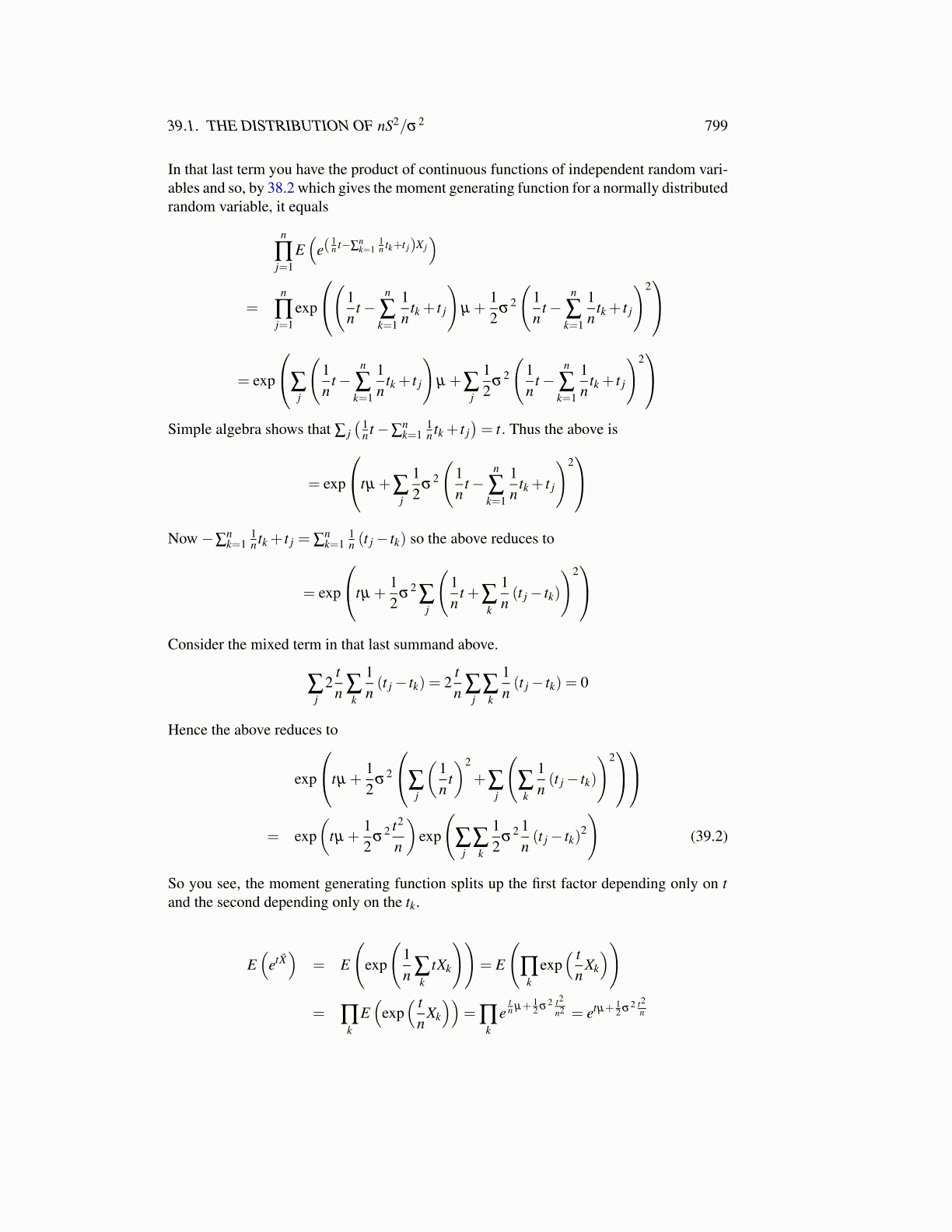
39.1. THE DISTRIBUTION OF nS2/σ2 799
In that last term you have the product of continuous functions of independent random vari-ables and so, by 38.2 which gives the moment generating function for a normally distributedrandom variable, it equals
n
∏j=1
E(
e(1n t−∑
nk=1
1n tk+t j)X j
)
=n
∏j=1
exp
(1n
t−n
∑k=1
1n
tk + t j
)µ +
12
σ2
(1n
t−n
∑k=1
1n
tk + t j
)2
= exp
∑j
(1n
t−n
∑k=1
1n
tk + t j
)µ +∑
j
12
σ2
(1n
t−n
∑k=1
1n
tk + t j
)2
Simple algebra shows that ∑ j( 1
n t−∑nk=1
1n tk + t j
)= t. Thus the above is
= exp
tµ +∑j
12
σ2
(1n
t−n
∑k=1
1n
tk + t j
)2
Now −∑nk=1
1n tk + t j = ∑
nk=1
1n (t j− tk) so the above reduces to
= exp
tµ +12
σ2∑
j
(1n
t +∑k
1n(t j− tk)
)2
Consider the mixed term in that last summand above.
∑j
2tn ∑
k
1n(t j− tk) = 2
tn ∑
j∑k
1n(t j− tk) = 0
Hence the above reduces to
exp
tµ +12
σ2
∑j
(1n
t)2
+∑j
(∑k
1n(t j− tk)
)2
= exp(
tµ +12
σ2 t2
n
)exp
(∑
j∑k
12
σ2 1
n(t j− tk)
2
)(39.2)
So you see, the moment generating function splits up the first factor depending only on tand the second depending only on the tk.
E(
etX̄)
= E
(exp
(1n ∑
ktXk
))= E
(∏
kexp( t
nXk
))
= ∏k
E(
exp( t
nXk
))= ∏
ke
tn µ+ 1
2 σ2 t2
n2 = etµ+ 12 σ2 t2
n